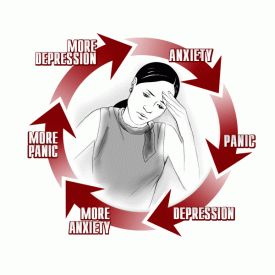It’s very common to find patients with fear and anxiety. As each and every patient would not be the same. It would be the responsibility of nurses to help patients to reduce the level of fear and anxiety by following some of the best methods available. It is considered to be one of the main motives in nursing diagnosis for anxiety.
The desired results of nursing diagnosis for anxiety in patients
The patients would normally experience a reduction with anxiety and fear and can be evidenced by following factors. These factors would help in this kind of nursing diagnosis.
- There would be verbalization concerning the feeling of being less anxious
- The patients would regain their usual sleep pattern.
- The facial expressions are found to be relaxed and so does the movements of their body
- the vital signs of the patients would be stable
- the patient would have perceptual ability in usual way and also the interactions with other people
The above mentioned factors can help in providing the result that patient is able to control the fear and anxiety. These results are normally found after the nursing diagnosis for anxiety has been carried out successfully.
Some of the nursing actions to be taken on nursing diagnosis for anxiety are mentioned below:
1. Patients must be assessed for any symptoms or signs of anxiety and fear. Some of the common symptoms would be, insomnia, tenseness, verbalization with the feeling anxious, shakiness, diaphoresis, elevated blood pressure, restlessness, tachycardia or self focused changed with behaviors.
2. Some the measures have to be implemented to reduce the anxiety and fear in the patient. Important measure or nursing diagnosis for anxiety includes,
- The patient should be assured that staff members are present nearby; they can respond to any emergency at the very next moment.
- Always keep the doors and curtain open so that patient would not get the feeling of confinement.
- Try to maintain a supportive, calm, confident methods to interact with the patients all the times
- orient the patients to the environment, routines and equipments. Try and explain them the purpose concerning the operation of kinetic bed if mentioned
- it’s best to introduce the patient to the rest of the staff members who are going to be taking part with the care of the patient. It’s best to maintain consistent number of staff members for a particular patient rather than changing the staff members every now and then.
- Try and explain all the test with diagnosis carried out
- it’s better to reinforce the explanations of physicians so as to clarify any type of misconceptions patients have about the diagnosis, prognosis and treatment plan.
- It’s wise to encourage verbalization of anxiety and fear. Give them good feedback every now then possible.
- instruct the patients with some of the best relaxation techniques and also encourage them to take part in different types of diversional activities.
- assist your patients to contact some of the appropriate types of community resources or initiate any suitable type of social service.
- offer them with the details based upon their current needs. It has to be explained in the level they are capable of understanding it. Try and encourage clarifications and questions of information provided.
- it’s also best to administer some of the prescribed agents for anti-anxiety if its indicated by physician.
- it’s good to include some of the teaching lessons or significant type of orientations.
- guide them to conduct the project of caring, to maintain concerned attitude and try not to be anxious.
3. it’s always wise to consult some of the appropriate health care service if all nursing diagnosis for anxiety above provided factors fail to help in controlling anxiety and fear.